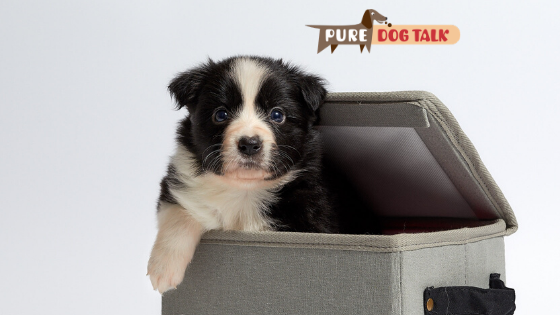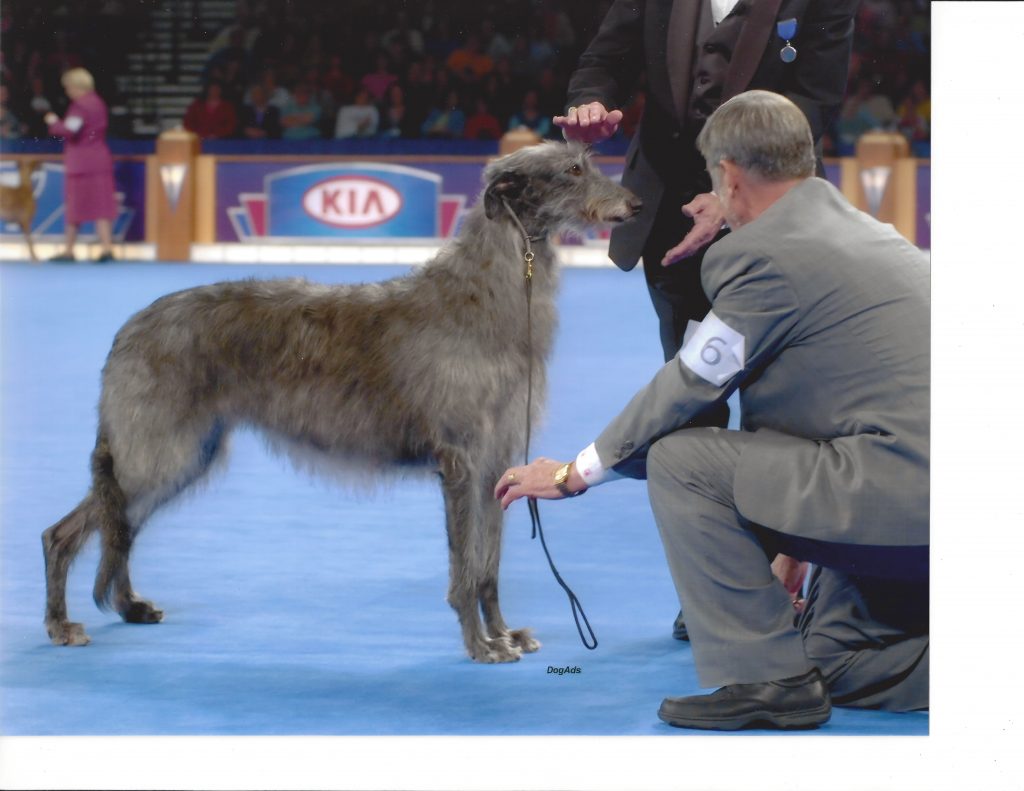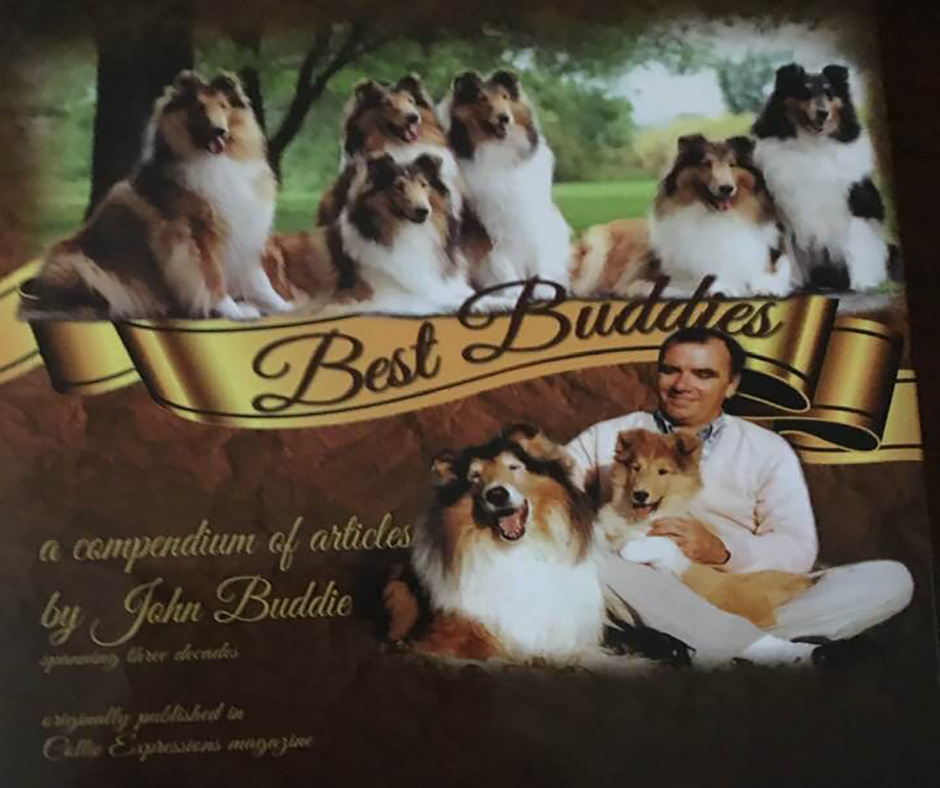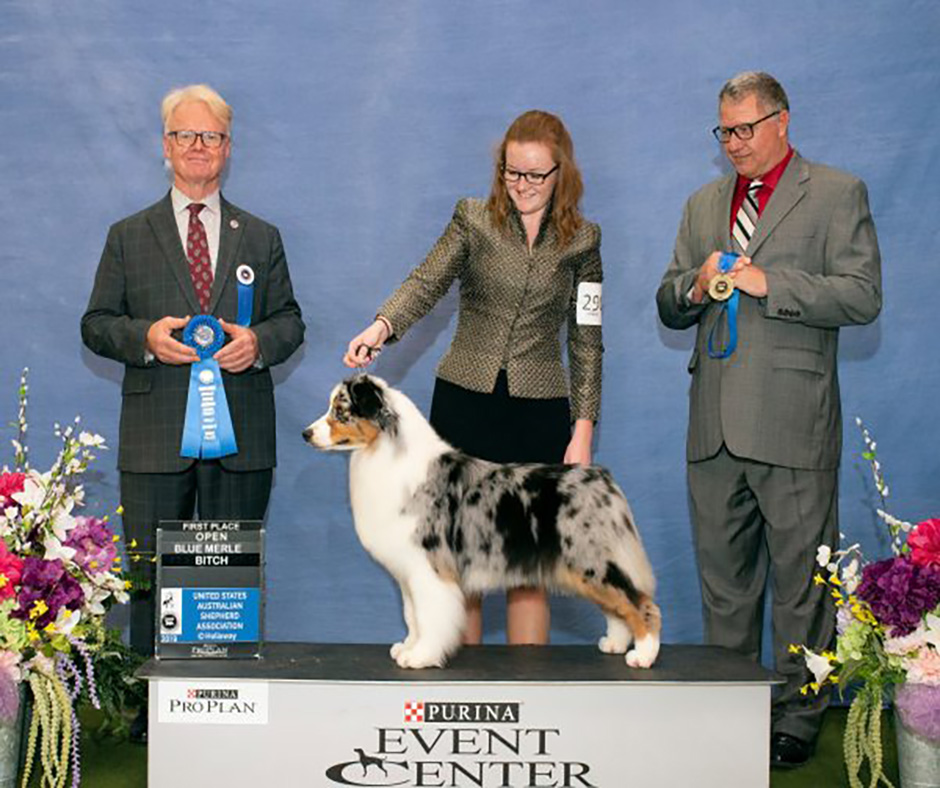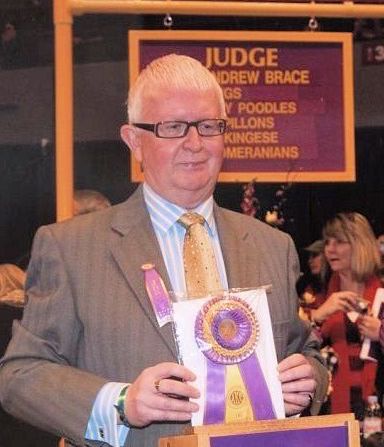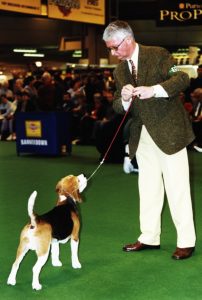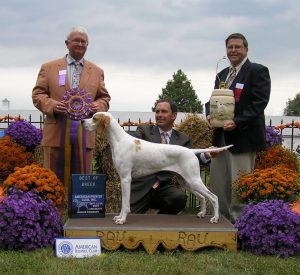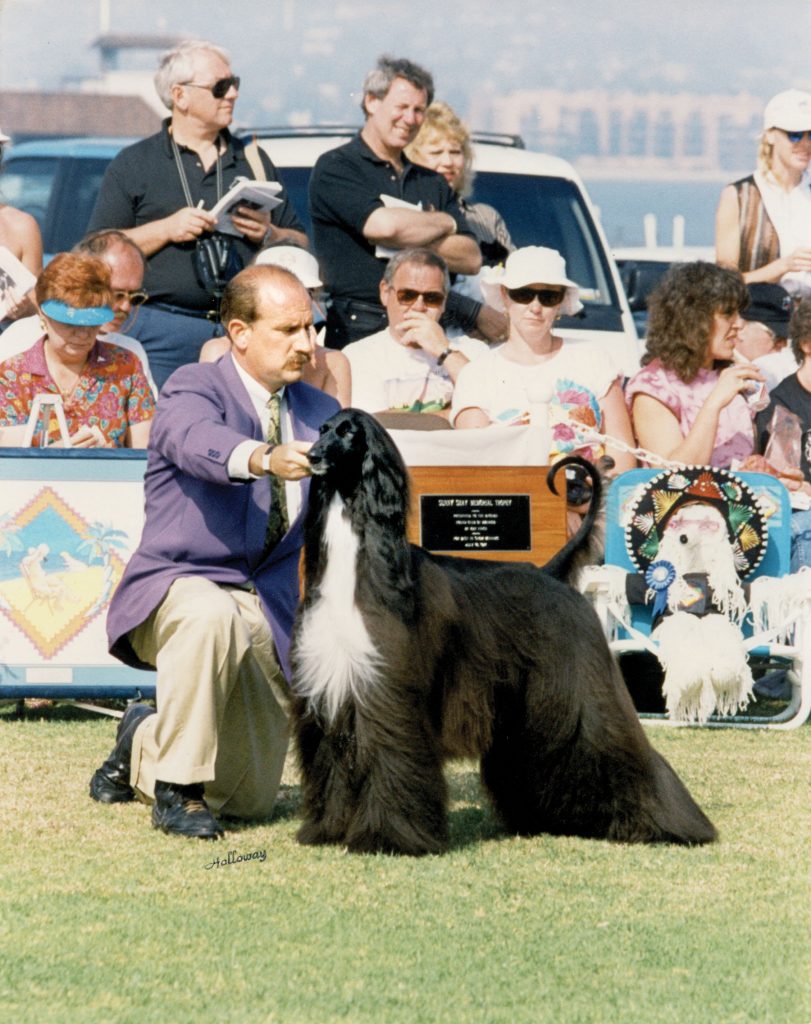481 – When the Best Laid Plans Go Awry
When the Best Laid Plans Go Awry
Amanda Kelly, Fwaggle Toy Manchester Terriers, joins host Laura Reeves for a conversation about dog breeding when you plan ahead, do your research and then the results don’t match the expectations.
Amanda and Laura swap stories about all of the times a breeding looked great on paper and was a disaster on the ground in one way or another. The takeaway? Breeding dogs will keep you perpetually humble and learning.
Unexpected markings. Dual sired litter rabbit holes. Repeat breeding pros and cons. And permission to fail.
A sense of humor helps keep it all in perspective. Keeping temperament and health as top priorities in a breeding program means that even if the pups in a litter don’t meet your expectations for the show ring, they will still live long, healthy lives as beloved companions.
“What I love about (dog breeding) is that there’s not clear answers,” Amanda noted. “We can ponder the theories and the different ideas and we can try new things if we give herself permission to do it. I hope when breeders have been around for a long time and are helping others that, I hope, is the gift that they’re giving them. Permission to try things, to try something new and different. What’s the worst thing that happens? They had some pets. The pet people are pretty happy about that.
“There’s not a right or wrong way to do this. If I’ve learned anything from doing this for many years and watching different breeders, there are 1000 different ways to do this. None of them are right or wrong, as long as we have the welfare of our dogs at heart. And we will learn something new every time.
“Every breeding that you do has value. You said it earlier, you learn something. You learn about what not to do, you learn about how your line is producing. So when that best in show dog winds up neutered because you made a bad choice in your puppy evaluation, you have to let it go.
“You need to be able to make a decision and live with it in the planning of a breeding and the evaluation of puppies. So allowing yourself to fail without feeling like a failure is the greatest freedom that you will give yourself as a breeder. I think sometimes we just get so wrapped up in the breeding that’s in front of us that we won’t allow ourselves to fail, we won’t allow ourselves to say ‘you know what, there’s nothing in here that I want to keep and so I’m going to let them go (to pet homes).”
471 – Myth Busting in Veterinary Medicine
Myth Busting in Veterinary Medicine
Dr. Marty Greer, our veterinary voice, joins host Laura Reeves for a fun episode by multiple listener request. They tackle old wives tales and do a bit of myth busting on veterinary medicine.
Q: Do bitches in season cycle together?
Yes.
“I think it’s true. I really do believe that happens. There’s hormones, there’s pheromones. It’s called convent syndrome or dormitory syndrome in humans. Absolutely it happens in dogs too.
“There’s a reason for that… it was thought that bitches would cycle together so that there would be additional mothers available to lactate should puppies be orphaned or otherwise the bitch wasn’t available to nurse her puppies.
“They cycle together, they all come into heat at the same time, they start excreting or secreting a pheromone weeks before they come into heat so that they can start recruiting male dogs so that they are available at the time that the bitch is ready to breed.
Q: Do intact male dogs need drugs when bitches are in season?
Yes.
“There’s no reason not to put a male dog on some kind of an anti anxiety medication.”
Q: Matings can happen through chain link?
Yes
“The drive to have a sexual encounter is a very, very strong drive in every species. We all know that … we’ve got pictures of dogs that know how to unlatch their kennel door, walk across the top of a kennel, drop down into the female’s pen, breed the female and then walk back out and get back into their own kennel. We have proof that these dogs are doing this because we now have video in people’s kennels.
“It’s a fascinating study in canine behavior but yes the boys do have a pretty strong drive and the females are very cooperative at that point. Yes you can use drugs. Keeping them separated physically is useful. But there is nothing that you can do that they can’t undo faster because they’re spending 23 hours and 49 minutes a day trying to figure out a way to get that particular encounter to happen and you spent 11 minutes that day figuring out a way for it not to happen.
“Anybody that tells you that they’ve never had an accidental breeding, that owns both males and females that are intact at their house, is either lying to you or it hasn’t happened to them yet.
Q: Does chlorophyll when given immediately when the bitch comes in season reduce the odor?
No
“It’s gonna help to a small extent, but it’s not going to be enough to cover up everything. No charcoal, chlorophyll, vanilla, Vicks, you name it, all the things that people try (is) going to overcome every single molecule. Remember dogs have probably 10,000 times the number of scent cells an inside their nose (than people).
Q: Will females that have pyometra always have a fever?
No.
“The uterus is a privileged organ. It isolates proteins that aren’t part of that particular individual’s DNA. That allows the little puppies to develop and grow and be born as little puppies and the uterus doesn’t say ‘oh you don’t belong here and have some kind of immune response that kicks them out.'”
375 – Dog Breeding: We’re ALL in this Together
Dog Breeding: We’re ALL in this Together
Patti Strand, the founder of the National Animal Interest Alliance, joins host Laura Reeves to talk about all dog breeders working together, raising the bar for the health and well-being of all dogs.
Strand provides an outstanding historical perspective on the question of dog breeding throughout the 20th century, commercial breeding operations to meet community demand for companion dogs, the programs put in place to monitor breeders and the confusion of outdated information.
“…there is a passion among commercial breeders today to do a better job and to learn how to do a better job,” Strand said. “One of our (NAIA) board members, Marty Greer, is a veterinarian. She gives a lot of seminars, a lot of health seminars … veterinary care-type seminars in the commercial dog breeding world. And she says she never had a more attentive audience. These people are taking notes and they’re asking questions. They’re excited about breeding. They’re excited about husbandry. So just a ton of really positive changes have taken place.”
Strand, a Dalmatian breeder for decades, added, “I’m a hobby breeder. I love what I do. I try to do it well. But what I’m really working toward is trying to support people who try to conduct themselves in the best way possible with the information and education and materials that we have.”
As president of NAIA, Strand works on legislation that impacts all breeders. Including researching actual numbers of dogs in animal shelters around the US.
“I had this experience last year in working on some legislation,” Strand commented. “I had a situation where a woman who owned a pet store asked me to help her and she told me that she was doing everything right.
“(I told her) ‘if you can demonstrate to me what you’re doing and you have a solid operation I will try to help you.’ So next morning I get up and I have like 150 documents from this woman. Every single puppy she bought from somebody whose USDA inspection reports were excellent. And not only that, every single puppy she bought had parents who were health tested for the very things that the hobby dog breeder world requires when you go to our AKC parent websites. The Breeders that were working with this particular distributor were all going to the AKC and the parent club websites and finding out what the requirements were for their breed and then duplicating it. So believe me, even 5 years ago you would not have seen that,” Strand observed.
“I think the reality is that we would all want pet stores or breeders, whether they’re hobby or commercial, who are doing things badly and where animals are being harmed not to be able to operate. I mean it’s just that simple. So with us at NAIA, we’re just all about conduct rather than categorizing people by putting a particular marketing label on people and then saying this label is no good and that label is good.”
336 – 20th Century Secrets in a 21st Century Format, Jaraluv
20th Century Secrets in a 21st Century Format, Jaraluv
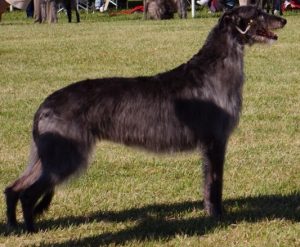
MBIS Ch. Jaraluv Ouija – Faith’s daughter who holds the BIS record for Deerhounds in the US with 21 All Breed BIS. Pictured here at 8 years at the SDCA national specialty.
Part two of the powerful interview with Ray and Jana Brinlee of Jaraluv Scottish Deerhounds applies their breeding secrets to today’s society. The small number operation modeled by the Brinlees is far more applicable to today’s world than the huge kennels maintained in the heyday of the sport.
“We need breeders to mentor new people,” Ray said. “There might be 20 good breeders and 80 people who breed dogs. There’s a difference.”
Ray’s solution to the “more exhibitors, fewer breeders” matrix that is at the center of dog show’s perceived decline is – it’s part of mentorship
“Breeders need to encourage pet people to show dogs,” Ray said. “We need breeders to tell folks, ‘that’s a heck of a dog I sold you, let’s try this, let’s go to this show, don’t waste those genes.”
The subjective nature of dog shows often is a driving force for exhibitors who turn to companion events, but the Brinlees see a different perspective.
“The difference is, as a breeder, you are doing it for the love of the breed,” Jana said. “You are trying to maintain the breed in the best way you can. All these other events are nice, they are fun, but they are not about preserving or maintaining your breed.”
Form IS Function
“We have to be concerned about the function of our dogs,” Ray noted “but many of our breeds are not allowed to do their historical jobs.” The Deerhound, for example, hunted in mountainous terrain. The flat track racing style of lure coursing doesn’t accurately test the breed’s function, Jana observed.
On the other hand, Ray contends that the classic “Deerhound movement…. Easy, active, true… if they do that, they will get around eight hours with the Hunt Masters hunting deer.”
Breed standards were written to describe the dogs that were best at their job. “We have to rely on that written word and be careful when you read it. That scares me about the generic show dog judging … the race to get more breeds makes me uncomfortable,” Jana said.
“It is important to us breeders that judges are a custodian for our breeds,” Ray added.
Listen to part one of the interview here.
331 – John Buddie part 2: Respect, Reverence and Romance
John Buddie part 2: Respect, Reverence and Romance
Master Breeder, John Buddie, Tartanside Collies, talks about the three “Rs”: Respect of the individuals who went before, reverence of finding and holding these people in high regard, and the romance of the history and studying the lore of the breed.
“If it’s all statistics and numbers and cut and dried, I think you burn out,” Buddie said.
In the second half of our interview, Buddie talks about maintaining virtues, the importance of selection and having heroes.
“You can lose the existing quality in a line by not maintaining emphasis on virtues, especially when you are trying to achieve improvement in an outcross,” Buddie said. “Don’t put so much emphasis on that new added characteristic that you lose sight of what you’ve worked so hard on to date”
Outcrosses
“You don’t always get the results you were aiming for until the generation after what you’ve done. The key is what you do with the outcrossed generation that makes or breaks you.”
Selection, selection, selection
- Take time to really observe and evaluate puppies at various ages.
- Don’t get rid of a puppy too early or too late.
- Good, but not good enough. Is it the best of the best or the best of what you have?
- Make a list of virtues of sire/dam… Identify what you most want to keep a puppy for from the litter.
- Watch puppies in a pen. Too many folks want to just pick up and look at profile.
- I take my time when evaluating puppies. People rush to judgement.
- Photos give you a static picture and can be inaccurate based on how legs are placed.
- More important to see in a natural position.
Back in the day, the optimum time to finish a dog was three years old, Buddie noted.
“I’m afraid too many people are just getting the points, not really appreciating the dog show itself, the evaluation process, who you showed to and what a difference it made.
“Be stimulated by being inspired. Just make sure you’re inspired by the right person who really believes in the sanctity of the breed and the sport,” Buddie said.
Listen to Part 1 of our conversation here.
308 – Bill Shelton, chapter 3: bottlenecks, marketing, adaptability
Bill Shelton, chapter 3: Genetic bottlenecks, marketing, adaptability
Renowned breeder and judge Bill Shelton and host Laura Reeves finish up their wide-ranging conversation on dog breeding and marketing in the 21st century.
“How do we move the bar from healthier to typier to sounder? We have to breed,” Shelton said. “We have to be accountable for what we produce. But we have to breed. And we have to get the message out about how what we’re doing is producing healthier and happier dogs. How our ‘commodity’ is predictable.”
Bottlenecks are something we may all have to deal with at some point, Shelton noted. He references the Dalmation outcross project in which Pointers were incorporated to eliminate a deadly disease. He also talks about the Basenji project, in which native dogs from Africa are incorporated in the gene pool, again to eliminate a heritable disease. Listen to my interview with Damara Bolte on this topic here.
“It’s a heretic idea to many people, but it’s going to be something we all have to do at some point, because our dogs exist in closed gene pools,” Shelton said. “It goes back to the weaving of genes. You don’t eliminate bad genes, you introduce new good genes.”
Additional resources:
https://puredogtalk.com/busting-the-genetic-testing-myths-dr-jerold-bell/
https://puredogtalk.com/77-one-breed-one-world-think-and-breed-global-with-doug-johnson-2/
https://puredogtalk.com/german-pinscher-all-purpose-robust-dog-for-active-owners-pure-dog-talk/
Doodles offer a lesson
“How many people dislike labradoodles. Think back in the ‘70s when there were those dogs called Australian shepherds,” Shelton noted wryly. “People get upset because doodle breeders can sell their cross-bred dogs, when they (show breeders) can hardly sell dogs. Why? Because (show breeders) exist in a vacuum. They don’t advertise, they don’t promote their breeds, they don’t promote themselves, they don’t know how to do it. And then they say how bad AKC marketplace is. We want to show our dogs. But we don’t want to share them or market them.”
No dog left behind
Shelton espoused several outstanding marketing concepts, including making a dog’s microchip number its registration number. The public finds more value in the microchip than the registration number, he said. This plan would enable AKC to sell both more registrations and microchips and promote a campaign of “no dog left behind” because all purebred dogs would be registered and microchipped.
The entire series
If you missed the first two installments of this series, you can find them here and here.
208 – Dr. Carmen Battaglia – Breeding SUPER Dogs
Carmen Battaglia’s Recipe for Breeding SUPER Dogs
Dr. Carmen Battaglia, AKC Board member, judge and author joined Pure Dog Talk host Laura Reeves for a LIVE seminar sponsored by Del Monte Kennel Club. Battaglia shared information about his SUPER dog breeding program featuring pedigree research, supplements, early stimulation and socialization.
“I can’t teach everything you need to know on this subject in an hour,” Battaglia chuckled. “Do your homework!” His deep and resource-rich website, Breeding Better Dogs, is an impressive place to start.
Battaglia’s SUPER dog program is designed to produce dogs which are mentally and physiologically superior to their competitors, with great stress tolerance and disease resistance.
“Anybody who’s willing to do the work can breed these dogs,” Battaglia said.
Pedigree research
Breeding these outstanding dogs starts with selecting the right sire and dam. The 28 ancestors shown on a typical three generation pedigree tell us nothing heritable, Battaglia observed.
“You need to understand the strengths and weaknesses in a pedigree,” Battaglia said. “The conformation, health and behavior traits we want don’t show up in names, titles and certifications.”
He recommended incorporating the stick dog and symbols pedigree systems in order to identify conformation, health and specific behavioral traits to make an ideal pairing. The symbols pedigree, Battaglia said, is designed to enable breeders to manage the “dreaded diseases” – those that kill, cripple, cause early death or blindness.
Breeding systems such as line-breeding, formula breeding and “breeding up” are all useful tools for producing superior dogs, Battaglia said.
Once the pedigree plan is established and the breeder is ready to move forward, Battaglia offers an extended program to build on the pedigree.
Supplement, stimulate, socialize
He recommends supplementing the dam with DHA from the first day she is bred to the day she weans the puppies. And supplementing the puppies from the day they are weaned until 14 weeks old. DHA supplement enhances the brain of the fetus, he added, noting that by 14 weeks old the puppy’s brain is 90 percent developed. Research shows these puppies will test 50 percent smarter than puppies fed a lower amount or not supplemented at all.
The next step in the SUPER dog program is early neurological stimulation. This program involves touching the puppies toes, rotating their body positions and placing them on a cold surface daily from the third to the 16th days of life. This system produces notable improvement in cardiovascular development, but Battaglia strongly cautions that too much of a good thing is a fatal error.
As the puppies grow in these carefully designed and developed litters, other important steps include allowing the puppy to watch its dam perform a specific desired task; socializing them to new places, sounds and smells; and, “enrichment” exercises to teach the dog to focus in a new environment.
The SUPER dogs program is being used to help breeders in the US produce the explosives detection dogs at home that are in demand for protecting our military and civilian installations. AKC is hosting a conference to bring together stakeholders, Battaglia said, to advance this important project.
Enjoy this tremendous opportunity from one of the legends in our purebred dog community.
196 – “Bracing” Talk: Pedigrees, Critiques and Skill
Andrew Brace on Pedigrees, Critiques and Skillful Handlers
In the third and final installment of my interview with international dogman Andrew Brace, he shared his knowledge on reading pedigrees, writing judge’s critiques and the definition of expert presentation in a wide-ranging and brutally honest discussion.
Our conversation also touched on the influence of animal rights extremism on the UK’s “high profile breeds” vet checks. Brace additionally noted the correlation between health issues in our breeds and the increasing tendency for breeders to “take Mother Nature’s job from her.”
Andrew Brace last showed a dog at Crufts 2000 when he retired having handled his BIS winning Beagle, UK Ch Dialynne Tolliver of Tragband.
Breed the best to the best to get the best
“Dedicated breeders are constantly aiming to improve their stock,” Brace said. “Those breeders who think breeding a winner is simply a matter of mating a winning bitch to a winning dog fail to realize the value and implications of the pedigree and do not understand what a valuable breeding tool this is.
“You need to be able to read a pedigree. This is where the truly great breeders score. The pedigree supplies valuable information – provided the reader has researched the dogs who appear in it. (Master) breeders study a pedigree of at least five generations. If they don’t know all the dogs in it personally, they’ll research them by seeking out photographs or simply asking older breeders who are still around exactly where these dogs scored and failed.
“In this way they build up a comprehensive picture of their dog’s ancestry. They will, over a period of time, be able to assess what faults and virtues lie behind their breeding stock. And, perhaps more importantly, establish which dogs were responsible for producing them,” Brace said.
“Correct is not produced by mating two extremes,” Brace added. “A potential parent who lacks in one area should be mated to a dog that excels in that failing. A dog that’s slightly straight behind will not produce perfect rear angulation by mating it to a dog that is hopelessly over angulated. Its chosen mate should have correct angulation.”
“Winning” dog is not always the same as “best” dog
“We have focused on show dogs,” Brace said. “In many breeds, this has meant that dogs that are perhaps a little exaggerated in one way or another have taken the eye of the judge over the dogs who are maybe more correctly balanced or constructed because they have a little sense of drama about them.
“It is our responsibility as judges to reward the correct dog over those dogs that have probably won a ton of best in shows by virtue of the fact that they fly around the ring with their long necks, gay tails and dripping in hair.”
Useful written critiques
“When writing critiques, I think it’s essential to detail the dog’s outstanding virtues but also mention any obvious shortcomings, which can always be done tactfully,” Brace said. “For example, ‘Head like a bucket’ and ‘prefer a cleaner backskull’ – they mean the same thing, but one is more palatable. It isn’t necessary to describe the dog from head to tail but, concentrate major pluses and minuses.”
Listen to renowned judge Ginny Lyne on this topic.
Merge into the background
Andrew Brace judging the American Pointer Club 2007 National Specialty. BOB Ch Cookieland Seasyde Hollyberry, handled by Michael Scott.
“It is little wonder that some of your most successful handlers go on to become outstanding judges,” Brace noted. “The thought process is exactly the same. Handling is the art of emphasizing a dog’s virtues whilst disguising its faults. Judging is all about recognizing the virtues yet getting the faults into perspective.
“Some countries, unfortunately, have produced some so-called professional handlers who have clearly watched a lot of American videos, bought some flashy jackets and race around the ring with dogs of indeterminate quality. They often carry too many dogs to do justice to and its obvious they aren’t kept in the best of conditions. These are the guys that are just doing it to make a buck. They aren’t handlers as I understand the word.
“The best handlers are those who are so skillfully unobtrusive that they just seem to merge into the background. These experts have the ability to project the dog to the judge at first sight,” Brace added.
186 — Canalizo: Ghosts of the Past and Breeding for the Future
Ghosts of the Past and Breeding for the Future
Legendary breeder, handler, and dog man, Michael Canalizo is most associated with the Afghan Hounds of Grandeur. He handled the iconic Afghan bitch, Ch. Tryst of Grandeur, to the pinnacle of all-time top-winning hound. He spoke with PureDogTalk about breeding, handling, history, and the wave of the future.
“You’ll See the World”
His mother is Lee Canalizo, also now an AKC judge. When Michael was young, his self-described middle-class family wanted a companion dog. They sought out Sunny Shay, who had just won Best in Show at Westminster Kennel Club with Ch. Shirkhan of Grandeur in 1957.
When Michael’s father asked which puppy Shay recommended they buy, her response was, “Honey, take the show dog, you’ll see the world.” And, Canalizo said, they have.
They first attended match shows with their dog, which Canalizo noted, were significantly different events in that era.
“Match shows were huge in the ‘60s,” Canalizo said. “They’d have 1,000 dogs on a weekend.”
“Kid Vicious”
The very focused and determined young Canalizo was given the nickname “Kid Vicious,” not because he was mean, he noted, but due to his intense concentration. “I was this little guy in a suit and tie.” His handling career started early, winning his first regular group with a class bitch when he was about 13 years old.
The Canalizos maintained a life-long relationship with Shay, becoming close friends. When she formed a business partnership with successful real estate developer Roger Rechler, Michael was hired to show the Grandeur Afghans.
This flourishing partnership was haunted by the devastation. On the 20th anniversary of Shirkhan’s WKC win, while Shay and friends attended a gala party at Rechler’s home, her kennel was burned down. Many dogs died in the arson fire, started, according to Canalizo, by neighbors who objected to the kennel in what had become a residential area.
Fortunately, many of the best of the Grandeur hounds were at the Rechler home to be showcased during the party. Shay eventually died in the ring, showing Ch. Boy Blu of Grandeur. Lee Canalizo was with Shay at the show that day. In those pre-cel phone days, Canalizo of course had no idea what had happened. He said he came home from a match judging assignment to the phone ringing off the hook.
“She brought me 40 years in the dog sport in the five years I was with her,” Canalizo said. “Sunny didn’t do anything by the book. She was haphazard. When Shirkhan died, at 17, she went scrambling to breed to his sons.”
After Shay died, Rechler closed the kennel to public stud. Shay was proud to have developed what she called, “A pure strain within the breed.” Canalizo noted that Shay’s first litter, born in 1941, went back to the breed’s first imports to this country.
Breeding Better Dogs
The Grandeur breeding program followed closely the “thoroughbred” formula described by Lloyd Brackett in a series of articles published in book form by Dog World Magazine in 1961. In this principle, Canalizo said, you breed a bitch to a male whose sire is the same as the mother’s sire.
Canalizo strongly advocates this line breeding theory, but he adds that breeders today have significant advantages.
“Frozen semen,” Canalizo said. “We’re in position to rewrite the probability of how to breed dogs. In those days we inbred because we couldn’t breed to a dog 20 years after it was viable. You bred to what was alive, viable and accessible. You had a very short shelf life. I’m not so sure we aren’t on the cusp of creating a new way to breed dogs.”
Ghosts and Magic
Canalizo’s “Dream BIS Lineup” came with fabulous, intimate stories about each of the dogs he selected — from eye contact across the Morris & Essex ring with Mick, the Kerry Blue Terrier, to a flash of sun on a gloomy day that spotlit his own dog in a Best In Show lineup of all black dogs near Sunny Shay’s final resting place.
Listen to Canalizo’s descriptions of these amazing dogs of the past, and which one wins Best in Show in his mind. And why! For more insight and conversation with Canalizo, read this excellent interview with Bo Bengston.
http://sighthoundreview.com/images/SR_10Wi_Michael_Canalizo_interview_9_.pdf
For additional information about “Brackett’s Formula”, read this detailed article from Carmen Battaglia.



